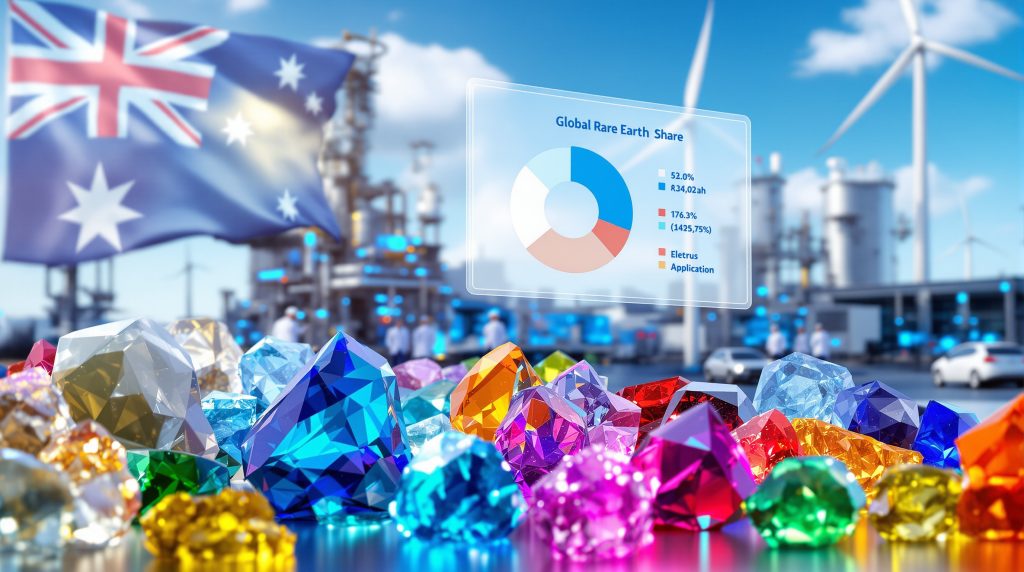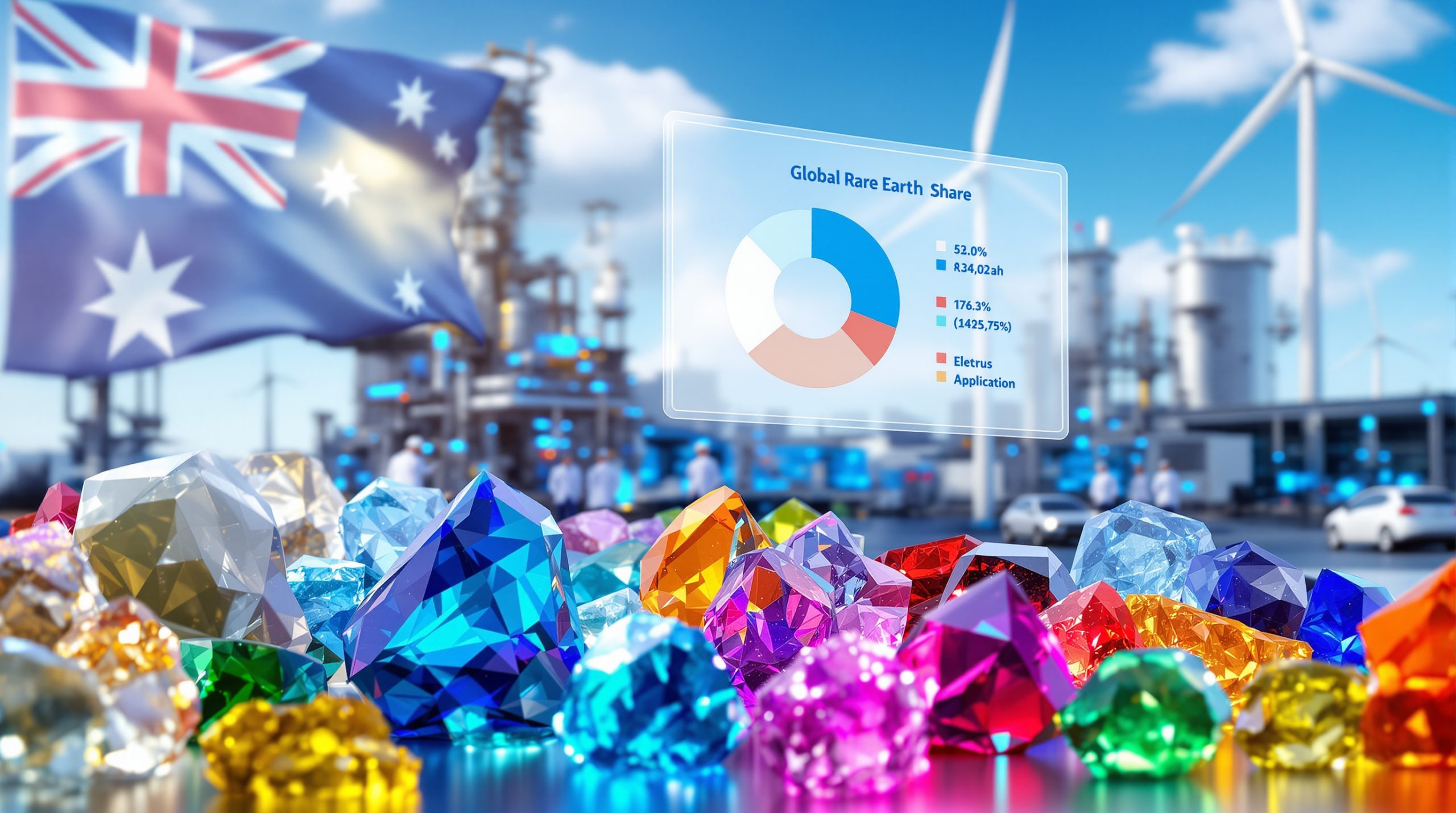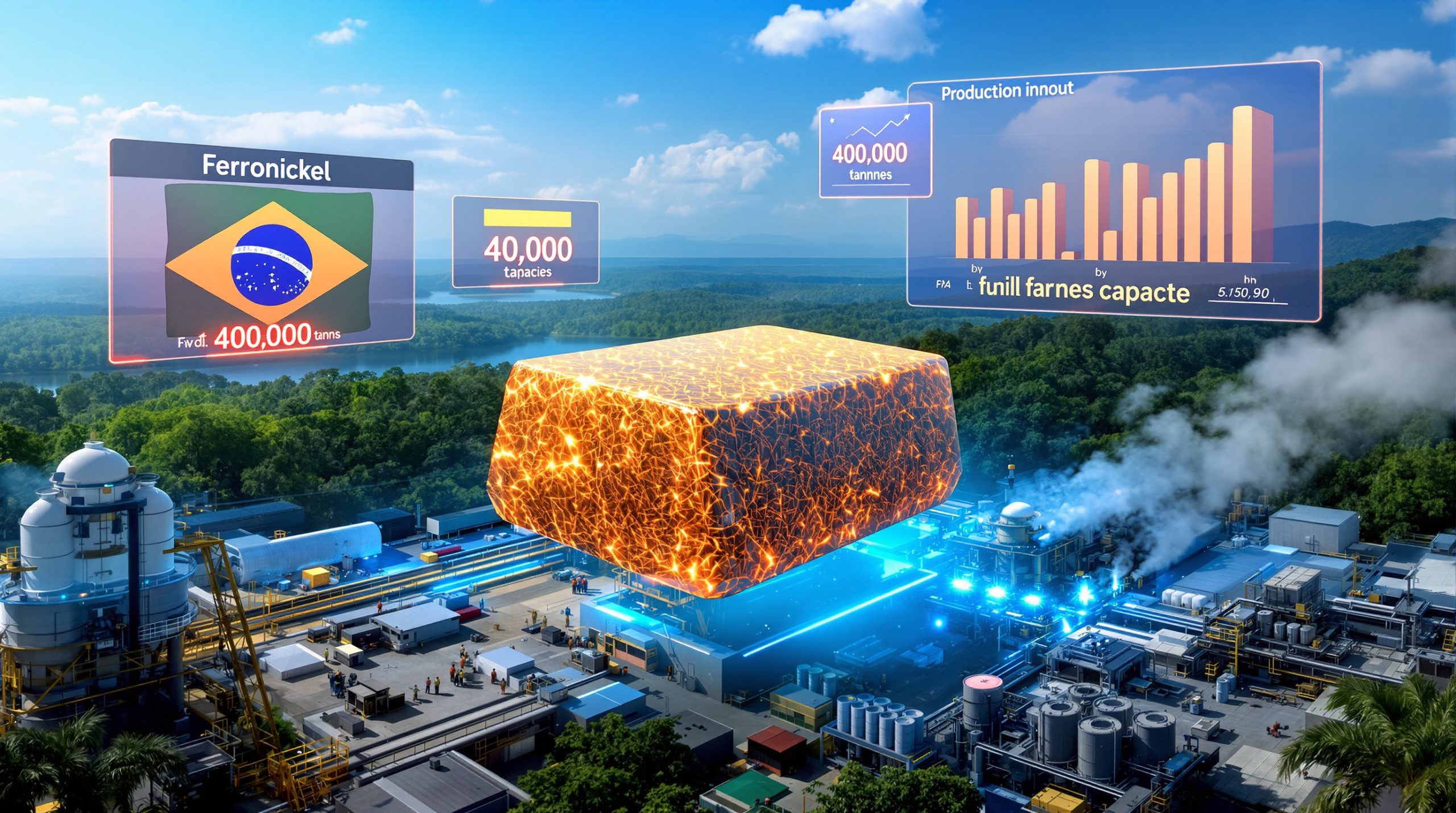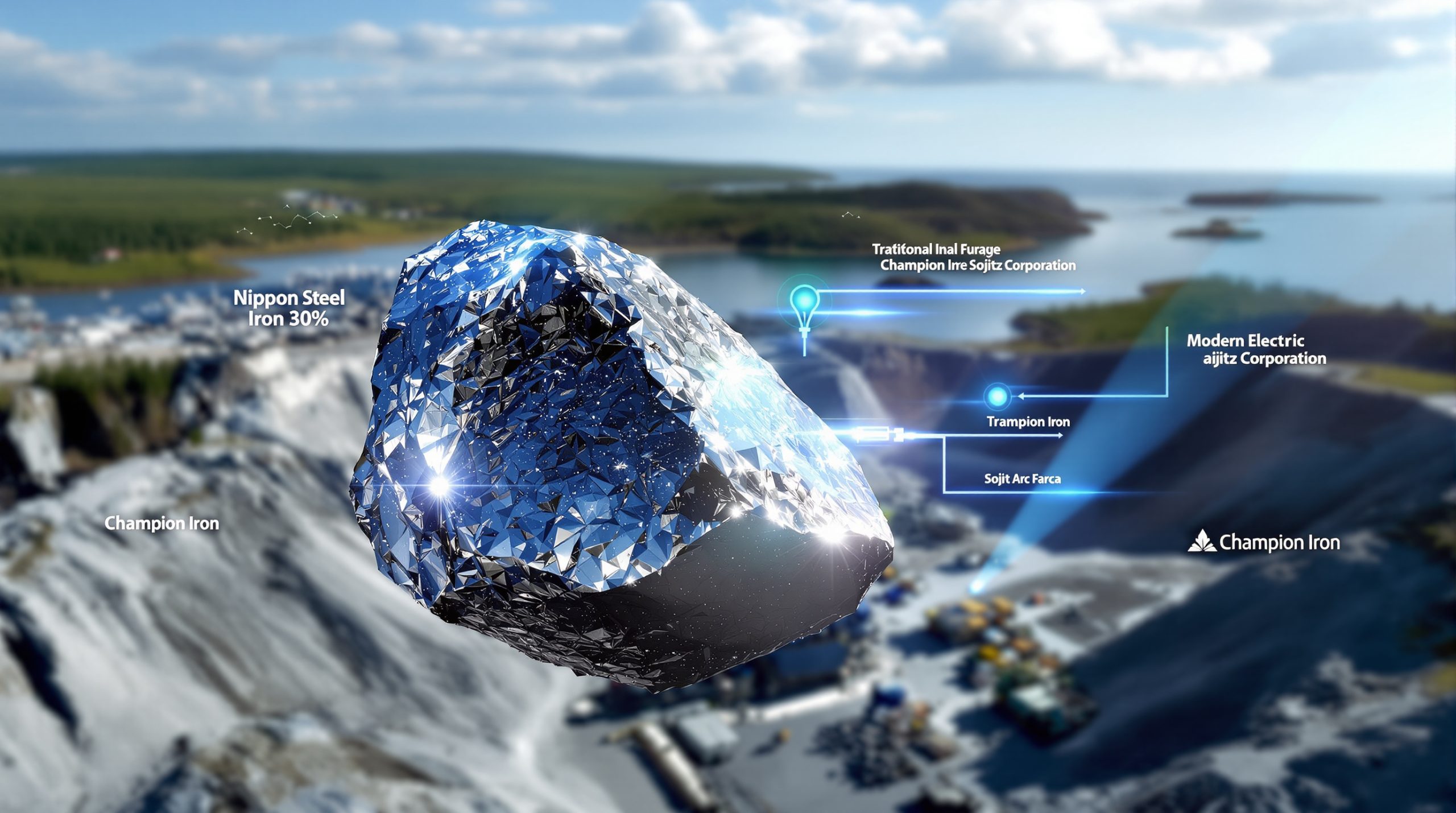Lynas Rare Earths Strategy 2025: Transforming the Global Critical Minerals Landscape
How Is Lynas Positioning for Rare Earth Market Leadership by 2025?
Lynas Rare Earths stands at a critical inflection point in 2025, implementing a comprehensive strategic transformation to cement its position as the dominant non-Chinese rare earth producer globally. With a recently secured A$750 million capital raising, the company is executing an ambitious expansion plan focused on vertical integration, product diversification, and geographic footprint enhancement. This strategy directly addresses growing demand for critical minerals energy transition amid escalating geopolitical tensions around supply chains.
What Makes Rare Earths So Critical to Global Technology in 2025?
The Strategic Value of Rare Earth Elements
Rare earth elements (REEs) form the backbone of modern technology despite their relatively low profile compared to metals like lithium or copper. These 17 elements enable everything from the powerful magnets in electric vehicle motors and wind turbines to precision optics in medical devices and military systems. Their irreplaceability in high-performance applications makes them strategically vital, with demand projected to grow at 6-8% annually through 2030 according to industry forecasts.
The unique properties of REEs create exceptional performance characteristics that cannot be replicated by other materials. For example, neodymium-iron-boron magnets are up to ten times stronger than traditional ferrite magnets at similar sizes, making them indispensable for miniaturized, high-efficiency motors in EVs and wind turbines. Similarly, europium provides the red phosphor in LED displays, while erbium amplifies signals in fiber optic networks.
The China Dominance Challenge
China's overwhelming market control—approximately 85% of global processing capacity and 60% of mining output—has created supply vulnerability that Western governments are increasingly determined to address. This market concentration has transformed rare earths from mere industrial inputs into geopolitical leverage points, driving national security concerns and reshaping industrial policy across North America, Europe, and the Indo-Pacific region.
China's dominance stems from decades of strategic investment in mining industry evolution technology, and talent development. The Chinese government has supported the industry through preferential policies, environmental regulation flexibility, and export controls. Between 2010 and 2012, China demonstrated its willingness to use this leverage by restricting exports, causing price spikes of over 700% for some elements. This event served as a wake-up call for industrial nations, triggering efforts to develop alternative supply chains that continue to accelerate today.
What Are the Core Elements of Lynas' 2025 Strategic Transformation?
Expansion into Heavy Rare Earth Production
The most significant evolution in Lynas' strategy is its breakthrough into heavy rare earth element (HREE) production. By mid-2025, the company will commence commercial-scale production of dysprosium and terbium oxides at its Malaysian facility, making it the only producer of separated heavy rare earths outside China. This represents a pivotal shift from Lynas' historical focus on light rare earths (primarily neodymium and praseodymium) to the higher-value heavy rare earth segment.
Strategic Insight: Heavy rare earths like dysprosium and terbium command prices 5-10x higher than light rare earths, with even tighter supply constraints and more critical applications in defense and advanced technologies.
The technical challenges of heavy rare earth separation have been significant. Unlike light rare earths, heavy rare earths have extremely similar chemical properties, making them notoriously difficult to separate. Lynas has invested substantially in proprietary solvent extraction techniques and process innovations to achieve commercial-scale separation, overcoming a barrier that has prevented other Western companies from entering this market segment.
Vertical Integration and Processing Capacity Expansion
Lynas is implementing a three-continent processing strategy to create redundancy and resilience:
-
Australia: Expansion of Mt Weld mining capacity and construction of a new cracking and leaching facility in Kalgoorlie to process rare earth concentrates domestically
-
Malaysia: Upgrades to the Lynas Advanced Materials Plant (LAMP) enabling heavy rare earth separation and increased production capacity
-
United States: Development of the Seadrift separation facility in Texas (pending final investment decision), potentially creating the first commercial-scale heavy rare earth separation capacity in North America
This geographic diversification reduces single-point vulnerabilities while positioning Lynas to serve key markets directly. The Kalgoorlie facility, expected to begin operations in late 2025, will process up to 84,000 tonnes of rare earth concentrate annually, reducing the company's reliance on Malaysian processing and addressing concerns about radioactive material handling. The Malaysian plant upgrades focus on efficiency improvements and specialized separation circuits for heavy rare earths, while the potential U.S. facility would establish Lynas as a critical supplier to the American defense industrial base.
Strategic Partnerships and Offtake Agreements
Recognizing that reliable customers are as important as reliable production, Lynas is strengthening its network of strategic partnerships:
- Enhanced long-term supply agreements with Japanese manufacturers
- Potential defense sector partnerships in the United States
- Exploration of joint ventures for magnet manufacturing to capture more downstream value
- Collaboration with Malaysia's Kelantan state investment arm to secure additional feedstock from future ionic clay projects
The partnership with Malaysia's Kelantan state represents a significant shift in Lynas' approach to securing raw materials. Ionic clay deposits, while lower grade than hard-rock mines like Mt Weld, contain higher percentages of valuable heavy rare earths and can be processed using less energy-intensive methods. This diversification of feedstock sources could enhance Lynas' product mix and reduce production costs for heavy rare earth elements.
How Will Lynas' Financial Structure Support Its 2025 Ambitions?
Capital Allocation Strategy
The A$750 million equity raising completed in August 2025 provides the financial foundation for Lynas' expansion plans. This capital infusion will be deployed across several priority initiatives:
| Investment Priority | Approximate Allocation | Strategic Rationale |
|---|---|---|
| Heavy REE Separation | 30% | Highest margin opportunity with limited global competition |
| Mt Weld & Kalgoorlie Expansion | 35% | Secures feedstock self-sufficiency and reduces geopolitical risk |
| U.S. Processing Facility | 25% | Opens access to U.S. government support and defense markets |
| Technology & Process Improvements | 10% | Enhances recovery rates and reduces environmental footprint |
The company's shift toward investing in higher-value processing capabilities rather than simply expanding mining capacity reflects a strategic pivot toward capturing more of the value chain. Industry analysis suggests that separation and refining of rare earths typically generate 3-5 times higher margins than mining and initial concentration, particularly for heavy rare earth elements where processing expertise serves as a significant barrier to entry.
Profitability Outlook and Margin Enhancement
Despite reporting compressed profits of just A$8 million for FY25 (down from A$84.5 million the previous year), Lynas' financial trajectory shows promise. The profit compression reflects the transitional investment phase rather than operational issues, with record production volumes of neodymium-praseodymium (NdPr) oxide reaching approximately 1,500 tonnes per quarter.
The company's margin enhancement strategy focuses on:
- Increasing production of higher-value heavy rare earths
- Reducing transportation costs through more localized processing
- Improving recovery rates through technological innovation
- Capturing premium pricing through "non-Chinese" supply certification
Industry analysts estimate that successful implementation of these strategies could potentially expand Lynas' gross margins from current levels of approximately 20-25% to 30-35% by 2027, assuming stable market pricing. The most significant margin improvement is expected to come from heavy rare earth production, where dysprosium and terbium oxides command prices of $250-400 per kilogram compared to $50-80 for NdPr oxide.
What Challenges Could Derail Lynas' Strategic Vision?
Regulatory and Environmental Considerations
Lynas continues to navigate complex regulatory environments, particularly in Malaysia where its operating license for radioactive material imports extends only until March 2026. Future extensions will depend on strict compliance with waste management requirements and maintaining political support. The company's strategy includes:
- Development of permanent disposal facilities for low-level radioactive waste
- Increased processing in Australia to reduce Malaysian regulatory exposure
- Enhanced environmental monitoring and transparency reporting
- Community engagement programs to strengthen social license
The company has invested significantly in water treatment facilities and waste management systems at its Malaysian plant, achieving a 70% reduction in wastewater discharge volumes since 2020. However, community concerns persist about the long-term storage of thorium-bearing residues. The construction of the Kalgoorlie processing facility is partly motivated by reducing the volume of radioactive material shipped to Malaysia, addressing a key regulatory concern.
Market and Competitive Pressures
While Lynas enjoys first-mover advantages outside China, competitive pressures are intensifying:
-
Chinese price manipulation: State-backed producers can strategically lower prices to undermine Western supply chain development
-
Emerging junior miners: New entrants in Australia, Africa, and North America are attracting investment, though most remain years from commercial production
-
Technological substitution: Research into rare earth alternatives continues, though commercial viability remains distant for most applications
-
Recycling advancements: Improved recycling technologies could reduce primary demand, though volumes remain limited through 2030
Of particular concern is the increasing vertical integration of Chinese producers into downstream magnet manufacturing and Western markets. Companies like Northern Rare Earth Group have established joint ventures in Europe and are exploring North American partnerships, potentially competing directly with Lynas for customers seeking supply diversification.
How Is Lynas Leveraging Geopolitical Tailwinds?
Western Government Support Mechanisms
Lynas is strategically positioned to benefit from multiple government initiatives designed to reduce critical mineral dependencies:
- Critical Materials Security Act: U.S. legislation providing grants, loans, and tax incentives for domestic rare earth processing
- Critical Minerals Acceleration Initiative: Australian government support for domestic processing
- EU Critical Raw Materials Act: European frameworks for strategic partnerships
- Japan-Australia Critical Minerals Partnership: Enhanced bilateral cooperation
These policy frameworks provide both financial support and market certainty that strengthen Lynas' investment case. The U.S. Department of Defense has already allocated funding for rare earth separation projects, while the Australian government has designated critical minerals projects as priority developments for expedited permitting and potential financial assistance.
Supply Chain Resilience Premiums
As manufacturers increasingly value supply security over lowest cost, Lynas benefits from "resilience premiums" that customers are willing to pay for non-Chinese sources. This trend is particularly evident in defense applications, electric vehicle manufacturing, and renewable energy sectors where supply disruption risks outweigh marginal cost differences.
The resilience premium manifests in several ways: longer-term contracts, price floors that protect against Chinese dumping strategies, and co-investment in processing facilities. Japanese manufacturers, having experienced supply disruptions during previous China-Japan diplomatic tensions, have been particularly proactive in supporting Lynas through offtake agreements and technical collaboration.
What Does Lynas' Product Evolution Mean for Market Positioning?
From Light to Heavy: Expanding the Product Portfolio
Lynas' product evolution represents a strategic shift up the value chain:
| Product Category | 2023 Status | 2025 Status | Strategic Significance |
|---|---|---|---|
| Light Rare Earths (NdPr) | Primary focus | Continued strength | Core revenue generator |
| Medium Rare Earths (Sm, Eu, Gd) | Limited production | Increased output | Diversification |
| Heavy Rare Earths (Dy, Tb) | No production | Commercial production | Highest margin opportunity |
| Mixed Rare Earth Carbonates | Produced | Reduced focus | Lower value |
| Separated Oxides | Limited range | Expanded portfolio | Higher value-added |
This evolution positions Lynas to capture more value across the rare earth spectrum while reducing vulnerability to price fluctuations in any single element. The shift toward heavy rare earths is particularly significant as these elements face the most severe supply constraints. For example, dysprosium, essential for high-temperature performance in permanent magnets, has seen recurring supply deficits since 2018 despite Chinese dominance.
Technology Applications and End Market Focus
Lynas is strategically aligning its production with the highest-growth application segments:
- Electric vehicle drivetrains: NdPr and Dy for high-performance permanent magnets
- Wind turbine generators: Heavy rare earths for temperature-resistant magnets
- Defense systems: Precision-grade materials for guidance systems and optics
- Consumer electronics: Specialized applications in displays and speakers
The EV market represents the largest growth opportunity, with each electric vehicle requiring approximately 1-2 kg of rare earth elements. Industry projections suggest that EV-related rare earth demand could triple between 2025 and 2030 as electric vehicles approach 30% of new vehicle sales in major markets. Wind energy presents another substantial growth vector, with each megawatt of direct-drive wind turbine capacity requiring approximately 200 kg of rare earth permanent magnets.
What Metrics Will Define Success for Lynas' 2025 Strategy?
Key Performance Indicators
Investors and industry observers should track several metrics to evaluate Lynas' strategic execution:
- Production volume growth: Target of 10,500+ tonnes annually of NdPr by 2026
- Heavy rare earth output: Commercial-scale production of dysprosium and terbium
- Geographic diversification: Percentage of processing occurring outside Malaysia
- Margin expansion: EBITDA margins trending toward 30%+ as product mix evolves
- Strategic partnerships: New offtake agreements with Western manufacturers
- Regulatory milestones: Malaysian license extensions and Australian/U.S. approvals
The company's ability to meet its production targets while managing capital expenditure will be critical. Historically, rare earth processing facilities have experienced significant cost overruns and technical difficulties during commissioning. Lynas' advantage lies in its decade-plus of operational experience, though the transition to heavy rare earth separation introduces new technical challenges.
Long-term Value Creation Potential
The ultimate measure of success will be Lynas' ability to translate strategic positioning into shareholder returns. Industry analysts project that if Lynas executes effectively on its 2025 strategy, the company could:
- Capture 20-25% of non-Chinese rare earth oxide demand
- Establish dominant position in Western heavy rare earth supply
- Achieve valuation multiples more aligned with specialty materials than basic mining
- Position for potential downstream integration into magnet manufacturing
Successful execution could transform Lynas from a mining company to a materials technology company, with corresponding improvements in valuation multiples. Specialty materials companies typically trade at 2-3x the EV/EBITDA multiples of traditional miners, reflecting their higher margins and more stable demand profiles.
How Does Lynas' Strategy Compare to Emerging Competitors?
Competitive Differentiation Analysis
Lynas maintains several competitive advantages against both established Chinese producers and emerging Western challengers:
| Competitive Factor | Lynas Position | Chinese Producers | Western Juniors |
|---|---|---|---|
| Scale | Commercial production | Larger scale | Pre-production |
| Vertical Integration | Mine to separated oxides | Comprehensive | Partial/planned |
| Heavy REE Capability | Emerging capability | Established | Limited/planned |
| Processing Know-how | 10+ years experience | Extensive | Limited |
| Western Government Support | Strong position | Limited/declining | Variable |
| Environmental Standards | High compliance | Variable | Proposed high standards |
| Customer Relationships | Established | Extensive | Developing |
This positioning gives Lynas a "middle path" advantage—more reliable than juniors while more geopolitically aligned than Chinese producers. The company's experience in navigating the technical, regulatory, and market challenges of rare earth production provides a significant head start against new entrants, many of whom underestimate the complexity of separation technology and customer qualification processes.
Among emerging competitors, only a handful have progressed to pilot plant testing of separation technologies, and even fewer have secured offtake agreements with end-users. While some new projects boast higher ore grades or innovative processing methods, these advantages must be weighed against execution risk and the multi-year timeline to achieve commercial production.
What Are the Investment Implications of Lynas' 2025 Strategy?
Risk-Reward Profile Evolution
For investors, Lynas' strategic transformation alters its risk-reward profile:
Risk Factors:
- Capital intensity and execution risk during expansion
- Regulatory uncertainty in Malaysia
- Chinese price competition and market manipulation
- Technology development timelines
Reward Potential:
- First-mover advantage in Western heavy rare earth production
- Strategic premium valuations for non-Chinese supply
- Vertical integration margin capture
- Government support reducing capital requirements
The balance suggests a medium-term investment case predicated on successful execution of the 2025 strategy rather than immediate financial returns. Investors should view Lynas as a strategic infrastructure play in the critical minerals space, with a 2-3 year horizon for realizing the full benefits of its transformation plan.
Valuation Considerations
Traditional mining valuation metrics may undervalue Lynas' strategic position. More appropriate frameworks include:
- Strategic asset valuation: Premium for supply chain security
- Technology company comparables: Higher multiples for specialized materials
- Option value: Potential for downstream integration
- National security premium: Value of guaranteed domestic supply
When applying strategic asset valuation approaches, industry analysts have suggested that Lynas' position as a critical supply chain node could justify a 20-30% premium over traditional resource valuations. This premium reflects the increasing willingness of governments and corporations to pay above-market prices for supply security in critical materials.
How Will Lynas' 2025 Strategy Impact the Global Rare Earths Market?
Supply Diversification Effects
Lynas' expansion contributes to a gradual rebalancing of global rare earth supply:
- Potential reduction in Chinese market share from 85% to 75-80% by 2027
- Establishment of the first viable heavy rare earth supply chain outside China
- Creation of benchmark pricing alternatives to Chinese domestic prices
- Development of processing expertise transferable to future projects
While these shifts may appear modest in percentage terms, they represent significant progress in an industry where China has maintained near-monopoly conditions for decades. The entry of Lynas into heavy rare earth separation is particularly noteworthy, as this segment has proven the most resistant to supply diversification efforts.
Market Structural Changes
Beyond volume impacts, Lynas' strategy could catalyze structural market changes:
- Transparent pricing mechanisms: Development of non-Chinese price benchmarks
- ESG differentiation: Premium market segment for environmentally responsible production
- Supply chain certification: Verification of origin becoming standard practice
- Vertical integration: Pressure on other producers to develop separation capabilities
The emergence of transparent pricing mechanisms represents perhaps the most significant potential market evolution. Currently, rare earth pricing remains opaque, with limited spot market activity and heavy reliance on Chinese domestic prices as reference points. Lynas' increased production volumes and product diversification could support the development of more liquid trading markets and potentially exchange-traded contracts for key rare earth elements.
Frequently Asked Questions About Lynas' 2025 Strategy
Will Lynas' Heavy Rare Earth Production Be Commercially Significant?
Yes. While initial volumes will be modest compared to Chinese output, Lynas' heavy rare earth production represents the first commercial-scale non-Chinese source of these critical materials. By targeting approximately 1,500 tonnes of heavy rare earth production annually by 2026, Lynas could supply approximately 5-7% of global demand for elements like dysprosium and terbium—a small but strategically vital share that provides supply chain alternatives for critical industries.
The technological breakthrough required to achieve heavy rare earth separation outside China should not be underestimated. Previous attempts by other companies have struggled with efficiency, purity, and cost-effectiveness. Lynas' achievement in commercializing this technology represents a significant competitive advantage that will be difficult for other non-Chinese companies to replicate quickly.
How Does Malaysian Regulatory Risk Affect Lynas' Strategy?
Malaysian regulatory considerations remain a significant factor in Lynas' strategic planning. The current operating license extends until March 2026, with extensions contingent on environmental compliance. Lynas is mitigating this risk through:
- Development of alternative processing capacity in Australia and potentially the U.S.
- Enhanced stakeholder engagement in Malaysia
- Strict compliance with waste management requirements
- Strategic partnerships with Malaysian state entities
While complete elimination of Malaysian regulatory risk is unlikely, the company's diversification reduces its overall exposure compared to previous years. The Kalgoorlie processing facility will handle initial cracking and leaching steps that generate the majority of radioactive waste, allowing the Malaysian plant to focus on downstream separation with reduced environmental impact.
Can Lynas Compete with Chinese Producers on Cost?
Lynas acknowledges the cost advantage of Chinese producers but is pursuing a differentiated strategy rather than direct cost competition. The company targets customers who prioritize supply security, environmental standards, and traceability over lowest cost. That said, Lynas continues to improve cost competitiveness through:
- Economies of scale as production volumes increase
- Process technology improvements
- Reduced logistics costs through localized processing
- Government support offsetting capital requirements
The goal is competitive—though not necessarily lowest—costs combined with premium positioning for non-Chinese supply. Industry analysis suggests that Lynas' production costs for NdPr oxide run approximately 15-20% higher than leading Chinese producers, a gap that narrows to 10-15% when factoring in transportation and compliance costs for Chinese exports.
Conclusion: The Strategic Significance of Lynas' 2025 Vision
Lynas' 2025 strategy represents more than corporate expansion—it embodies the broader global effort to develop resilient supply chains for critical minerals. By evolving from a light rare earth producer into a diversified, vertically integrated supplier of both light and heavy rare earths across three continents, Lynas is positioning itself at the nexus of industrial policy, geopolitical competition, and technological transformation.
The success of this strategy will depend on execution excellence, regulatory navigation, and market development. If successful, Lynas will not only strengthen its corporate position but also contribute significantly to Western industrial sovereignty in critical materials. For investors, customers, and policymakers alike, Lynas' 2025 transformation offers a case study in how strategic minerals companies can adapt to a changing global landscape where US–China trade impact and the development of a new European CRM facility are reshaping supply chains globally.
Furthermore, the company's investment in AI in mining innovation is expected to drive additional efficiencies in processing and extraction, potentially giving Lynas another competitive edge in a market where technological advancement is becoming increasingly important. As Lynas details in their official announcements, their rare earths strategy for 2025 represents a comprehensive approach to addressing market challenges while positioning for long-term growth in a critical sector.
Ready to Spot the Next Rare Earths Opportunity?
Stay ahead of the critical minerals investment curve with Discovery Alert's proprietary Discovery IQ model, which instantly notifies you of significant ASX mineral discoveries across rare earths and 30+ commodities. Understand why major mineral discoveries can lead to substantial returns by exploring our dedicated discoveries page.




